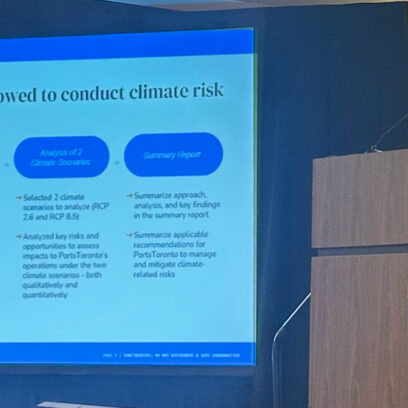Criteria for High-Quality Carbon Credits

Comparing rating systems vs. protocols and defining top criteria to empower businesses with the knowledge to assess high-quality carbon credits.
In this post, we will discuss the essential criteria for high-quality carbon credits, starting with a comparison between rating systems and carbon registry protocols, referred to as protocols herein, for assessing carbon credit quality. We will then delve into key aspects to look for in high-quality carbon credits, such as additionality, realistic and credible baselines, quantification and monitoring, permanence, and avoiding double counting. The importance of co-benefits in evaluating carbon credit quality will also be explored. By focusing on these criteria and understanding the distinctions between ratings systems and protocols, businesses can make informed decisions when procuring carbon credits, ultimately contributing to their organization’s sustainability goals and the global effort to mitigate climate change.
Assessing Carbon Credit Quality
Rating Systems vs. Protocols
Before diving into the criteria for high-quality carbon credits, let’s explore the differences between rating systems and protocols when it comes to evaluating carbon credit quality. Protocols are the rules and guidelines established by carbon registries that govern the creation, issuance, 3rd-party verification, and tracking of carbon credits. Reputable carbon registries have public ledgers which display both issuances and retirements of credits and provide documentation for each carbon offset project including project design documentation that highlights how the project fits the selected protocol, monitoring reports, and issuance records. On the other hand, rating systems, such as BeZero Carbon, Sylvera, and Calyx, are independent assessments of carbon credits that assign a score based on various factors, including the project’s environmental and social impact.
While protocols and reputable carbon registries are essential for ensuring the quality and verification of carbon credits, rating systems can provide an additional layer of scrutiny and help businesses make more informed decisions. Rating systems are a complementary tool that can be utilized in tandem with a review of a specific carbon offset project on a carbon registry, but a carbon offset project cannot be issued based solely on ratings and ratings do not impact a project’s status on a carbon registry. Rating systems may be subject to bias and may not cover all aspects of a carbon credit’s quality. Given the core criteria required by reputable registries, some argue that rating systems may not be necessary.
The table below compares the two approaches for assessing carbon credit quality:
RATING SYSTEMS VS PROTOCOLS FOR ASSESSING THE QUALITY OF CARBON CREDITS
| Aspect | Protocols | Ratings Systems |
| Purpose | Rules and guidelines for carbon credit creation, issuance, verification, and tracking; prevents double counting of carbon credits | Independent assessment of carbon credit quality |
| Source | Carbon credit registries | 3rd-party organizations |
| Coverage | Core criteria required by registries | Varies depending on the rating system |
| Pros | Standardized, rigorous, and widely recognized | An additional layer of scrutiny, can highlight co-benefits |
| Cons | Rigidity, may not capture all quality aspects | Potential bias, may not cover all quality aspects |

🌍 Carbon markets can feel overwhelming—fragmented data, limited transparency, and conflicting advice make it hard to know where to start. In this webinar, our experts give a clear, practical introduction to the VCM.

Certified Offset Portfolios
Buying high-quality carbon offsets has never been easier. Explore CBCO Portfolio 22-1 and get instant access to fully vetted carbon offsets.
Ultimately, businesses should choose the approach that best suits their needs and resources. Combining both protocols and rating systems may provide a comprehensive assessment of carbon credit quality while relying solely on protocols is an acceptable path forward as well that can lead to the selection of high-quality projects when you know what to look for. It is important to note that not all carbon offset projects, including high-quality projects, have been rated at this time by 3rd party rating bodies. As such, lack of ratings should not be a limiting factor when procuring carbon credits. It is however important to source credits from a reputable registry with technically sound protocols and 3rd party verification requirements.
Core Carbon Principles (CCPs)
The Core Carbon Principles (CCPs), published by the Integrity Council for the Voluntary Carbon Market (ICVCM), establish a global benchmark for high-integrity carbon credits, providing credibility and rigor to the voluntary carbon market. Developed through input from numerous organizations, the CCPs identify carbon credits that create genuine climate impact based on the latest science and best practices. The Integrity Council has outlined 10 key principles for high-integrity carbon credits, addressing governance, emissions impact, and sustainable development. Carbon credits are awarded the CCP label only if they meet the council's criteria. By setting a global benchmark, the CCPs aim to build trust, unlock investment, and facilitate the transition to a 1.5° Celsius (C) climate future.
High-Quality Carbon Credit Criteria
Now that we've looked at the differences between protocols and rating systems, let's dive into the specific criteria that make up high-quality carbon credits. Below, we’ll go over some of the criteria we look for based on our experience purchasing carbon credits in the voluntary market.
ADDITIONALITY
Additionality is a critical factor in determining the quality of a carbon credit. It ensures that the emissions reductions, avoidance, or sequestration would not have occurred without the carbon credit project. For example, a renewable energy project that would not have been implemented without the support of carbon credits meets the additionality criteria. Conversely, funding an already planned renewable energy project does not demonstrate additionality.
Realistic and Credible Baseline
A realistic and credible baseline is essential for measuring the impact of a carbon credit project. The baseline should accurately estimate the emissions level that would occur without the project. Credible baseline setting can be achieved using historical data or industry benchmarks. An unrealistic baseline might overestimate emissions without the carbon credit project, leading to inflated claims of emissions reductions.
Quantification, Monitoring, Reporting, and Verification
Robust quantification, monitoring, reporting, and verification practices are crucial for ensuring the quality of carbon credits. These practices should involve rigorous data collection and 3rd-party verification to maintain transparency and accuracy. Insufficient practices, such as self-reporting and incomplete data, can undermine the credibility of a carbon credit project. Addressing leakage, which occurs when a project's emissions reductions lead to an increase in emissions elsewhere, is also essential for maintaining carbon credit quality.
PERMANENCE
Permanence is an important aspect of carbon credits, as it refers to the lasting nature of emissions reductions or sequestration. Examples of permanent emissions reductions or sequestration include afforestation and reforestation projects, which can store carbon for many years or even centuries. Impermanent emissions reductions or sequestration, such as carbon capture and storage (CCS) that may release carbon back into the atmosphere over time, may be less desirable from a long-term climate perspective.
No Double Counting
Avoiding double counting is vital for maintaining the integrity of carbon credits. Double counting occurs when the same emission reduction is counted towards multiple carbon credit programs or climate goals. To prevent double counting, standardized accounting principles and 3rd-party verification should be implemented to ensure that each emission reduction is only counted once.
Other Factors That May Improve High Quality
Co-benefits can also play a role in determining the quality of a carbon credit. Projects that provide additional environmental, social, or economic benefits beyond reducing or sequestering CO2 are often considered more valuable. For example, a project that supports local communities through job creation or contributes to biodiversity conservation can be seen as having higher quality compared to a project that solely focuses on emissions reductions.
Conclusion
In conclusion, high-quality carbon credits are an essential tool for effectively mitigating greenhouse gas (GHG) emissions and addressing climate change, particularly when paired with direct decarbonization action—we continue to encourage companies to reduce what they can and offset the rest. When offsetting, investing in high-quality projects is important to help impactful projects scale. By considering criteria such as additionality, realistic and credible baselines, robust quantification and monitoring, permanence, and avoiding double counting, organizations can ensure that their carbon credit purchases have a meaningful impact on the environment. Navigating carbon registry protocols and comparing projects can be cumbersome but it's worth the effort when seeking to maximize your decarbonization efforts. CarbonBetter can help you evaluate the quality of carbon credits and guide you in making the best choices for your organization's sustainability goals and guide you in making the best choices for your organization's sustainability goals. Contact us today to get started on your journey toward a more sustainable future.
Protocols are rules and guidelines established by carbon registries governing carbon credit creation, issuance, verification, and tracking. They ensure quality and prevent double counting. Rating systems, on the other hand, are independent assessments by 3rd-party organizations that assign scores to carbon credits based on factors like environmental and social impact. While protocols are essential, rating systems can provide an additional layer of scrutiny to help businesses make more informed decisions.
Co-benefits are additional environmental, social, or economic benefits that a carbon credit project provides beyond reducing or sequestering CO2. Projects with co-benefits, such as those supporting local communities through job creation or contributing to biodiversity conservation, are often considered higher quality compared to projects that only focus on emissions reductions.
To purchase high-quality carbon credits, consider criteria such as additionality, realistic and credible baselines, robust quantification and monitoring, permanence, and avoiding double counting. Additionally, evaluate co-benefits and understand the differences between ratings systems and protocols, selecting the most appropriate approach for your business. Seek assistance from experts like CarbonBetter to help evaluate carbon credit quality and guide you in making the best choices for your organization's sustainability goals.

About the Author
Pankaj Tanwar is Managing Director of Climate Services at CarbonBetter. He has experience leading Fortune 100 companies through their sustainability journeys, including sustainability driven growth in the food industry. Pankaj holds an MBA from Northwestern University’s Kellogg School of Management and a BTech in Mechanical Engineering from the Indian Institute of Technology, Kanpur.


